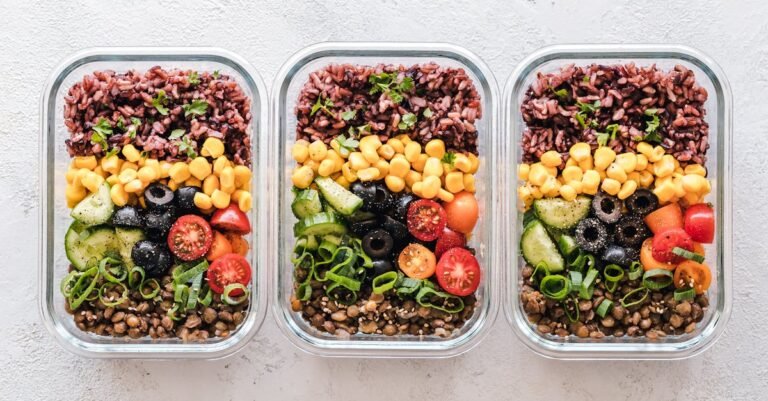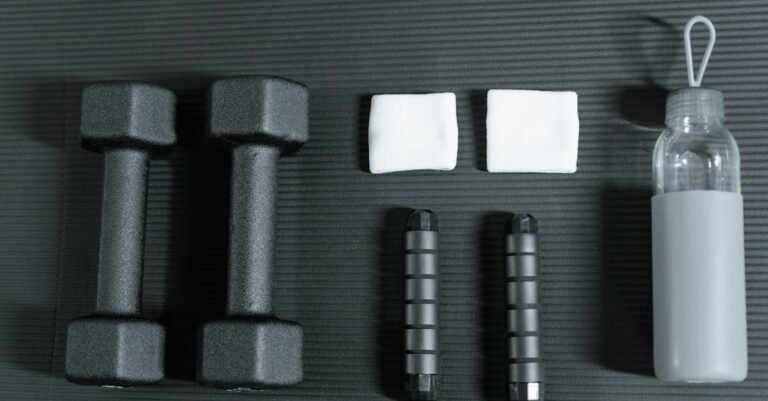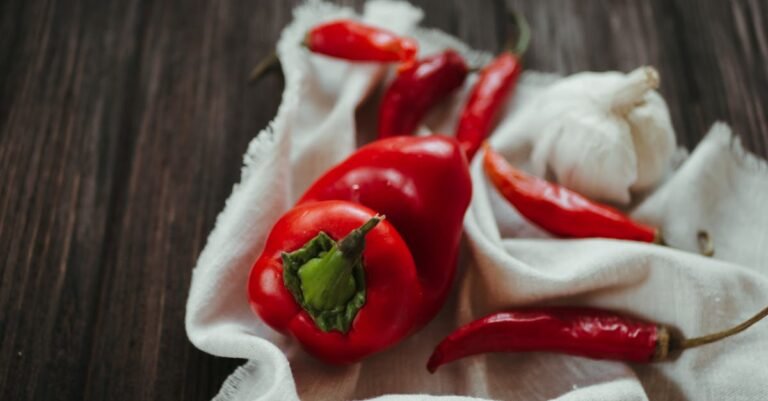Table of Contents
- Eating Healthy On A Budget: Fitness Tips
- Why Bother Eating Healthy & Staying Fit on a Budget?
- Smart Shopping Strategies: Your Grocery Store Game Plan
- Cooking Cleverly: Making Your Food Work Harder
- Integrating Fitness Without Breaking the Bank
- Conclusion: Your Health & Wallet Can Thrive Together
- Frequently Asked Questions (FAQs)
Eating Healthy On A Budget: Fitness Tips
Let’s be real for a second. You want to feel great, look good, and have loads of energy, right? Of course, you do! And you’ve probably heard a million times that eating healthy and staying active are the keys. But then reality hits – organic kale costs a fortune, gym memberships drain your bank account, and suddenly, that pizza delivery looks mighty tempting. It feels like being healthy is a luxury item, reserved for those with overflowing wallets. But what if I told you it doesn’t have to be that way? What if you could nourish your body, boost your fitness, and keep your finances in check? It sounds too good to be true, but trust me, it’s totally possible. You just need the right game plan. This guide is all about ditching the “healthy is expensive” mindset and embracing smart, savvy strategies to eat well and move more without breaking the bank. Ready to transform your health and your budget? Let’s dive in!
Why Bother Eating Healthy & Staying Fit on a Budget?
Okay, so maybe you’re thinking, “Is all this effort really worth it? Life’s expensive enough!” I get it. When you’re juggling bills, work, and life, adding “healthy eating” and “exercise” to the list can feel overwhelming, especially if you think it means spending more money. But here’s the thing: investing a little time and strategic thinking now pays off massively down the road, not just for your physical well being, but for your wallet too.
The Long-Term Payoff: Health is Wealth (Literally!)
Think about it. Poor eating habits and a sedentary lifestyle are major contributors to chronic diseases like type 2 diabetes, heart disease, and certain types of cancer. These conditions don’t just impact your quality of life; they come with hefty price tags – doctor visits, medications, potential time off work. It’s the classic “pay now or pay later” scenario. Spending a bit more effort (and sometimes, slightly more money, strategically) on whole foods and incorporating free or low cost exercise now can save you a fortune in healthcare costs later. It’s like preventative maintenance for your body. You wouldn’t skip oil changes for your car and expect it to run forever, right? Your body deserves the same proactive care. Plus, when you feel good physically – more energy, better sleep, improved mood – you’re more productive, more resilient, and generally better equipped to handle whatever life throws your way. That’s a return on investment you can’t put a price on.
Busting the Myth: Healthy Eating Isn’t Just for the Rich
Somewhere along the line, healthy eating got this reputation as being elitist. We see perfectly curated smoothie bowls on Instagram, expensive superfood powders, and boutique fitness classes, and assume that’s the only way. Nonsense! That’s marketing, not reality. Eating healthy is fundamentally about choosing whole, unprocessed foods more often than not. Think beans, lentils, eggs, oats, seasonal fruits and vegetables, whole grains. These are some of the cheapest foods available! It’s the processed convenience foods, the fancy prepackaged snacks, and the constant takeout that often drain our budgets (and sabotage our health goals). Shifting your focus from pricey “health halo” products to simple, nutrient dense staples is the secret weapon for affordable healthy eating. It requires a bit more planning and perhaps more time in the kitchen, but the idea that you need a six figure salary to eat well is simply not true. You just need to be a savvy shopper and a smart cook.
Smart Shopping Strategies: Your Grocery Store Game Plan
Alright, you’re convinced. Eating healthy on a budget is doable and worthwhile. Now, let’s talk tactics. Your biggest battleground? The grocery store. It’s where good intentions can either flourish or get completely derailed by impulse buys and confusing marketing. Winning here means having a solid game plan before you even walk through the automatic doors.
Master the Art of Meal Planning
If you take away only one tip from this entire article, let it be this: meal plan! Flying by the seat of your pants when it comes to food is a recipe for budget disaster and unhealthy choices. Meal planning is your roadmap to saving money and eating well. It doesn’t have to be complicated or rigid, but having a general idea of what you’ll eat for the week prevents those last minute “what’s for dinner?” panics that often lead to expensive takeout or throwing together something less than nutritious.
Step 1: Check Your Pantry First
Before you even think about what recipes you want to make, take inventory. What do you already have? Peek into your fridge, freezer, and pantry. Is there half a bag of lentils? Some frozen chicken breasts? A can of tomatoes hiding in the back? Maybe some wilting spinach that needs using ASAP? Make a list of these items. This is your starting point. Planning meals around what you already possess is the number one way to reduce food waste and cut down your grocery bill. Why buy more rice if you already have three bags?
Step 2: Build Around Sales & Staples
Once you know what you have, grab the weekly grocery store flyers (or check their apps). What’s on sale? Is chicken thigh cheaper than breast this week? Are bell peppers a bargain? Are apples practically being given away? Use these sale items, along with budget friendly staples (like beans, lentils, rice, oats, pasta, eggs, potatoes, carrots, onions), as the foundation for your meal plan. If broccoli is on sale, plan for stir fry or roasted broccoli. If canned tuna is cheap, think tuna melts or tuna salad. Building your meals around these discounted items and reliable staples ensures you’re getting the most nutritional bang for your buck.
Create a Killer Grocery List (and Stick to It!)
Now that you have your meal plan based on inventory and sales, create a detailed grocery list. Write down everything you need for the recipes you’ve planned, plus any regular staples you’re running low on (like milk, coffee, or olive oil). Be specific! Don’t just write “vegetables”; write “1 head of broccoli, 3 bell peppers, 1 bag of spinach.” The crucial part? Stick to the list! Grocery stores are designed to make you buy things you don’t need. Avoid browsing aisles you don’t need anything from. Resist those tempting end cap displays. If it’s not on the list, it doesn’t go in the cart (unless it’s an incredible, unadvertised deal on a staple item you use regularly). And never, ever shop when you’re hungry – that’s a surefire way to end up with a cart full of impulse buys.
Embrace Budget-Friendly Protein Powerhouses
Protein is essential for satiety (feeling full) and muscle repair (crucial for fitness!), but it can often be the most expensive part of a meal. While steak and salmon are great, they aren’t always budget friendly. Learn to love cheaper protein sources!
- Legumes: Beans (black, kidney, chickpeas, etc.), lentils, and peas are nutritional superstars and incredibly cheap. Use them in soups, stews, salads, curries, or even make veggie burgers.
- Eggs: Versatile, packed with protein, and relatively inexpensive. Breakfast, lunch, or dinner – eggs fit anywhere.
- Canned Fish: Tuna, sardines, and canned salmon are excellent sources of protein and omega 3 fatty acids, often much cheaper than fresh fish.
- Chicken Thighs/Drumsticks: Often significantly cheaper than chicken breasts, and arguably more flavorful!
- Tofu & Tempeh: Plant based options that readily absorb flavors and are usually quite affordable.
- Ground Meats (Turkey/Beef): Look for sales or leaner options which are sometimes cheaper. Stretch them further by adding lentils or chopped mushrooms.
Don’t feel you need expensive cuts of meat every night. Rotating these budget proteins keeps things interesting and affordable.
Don’t Fear the Freezer Aisle (or Canned Goods!)
Fresh is best, right? Not always, especially when budget is a concern. Frozen fruits and vegetables are picked at peak ripeness and flash frozen, locking in nutrients. Often, they are just as nutritious (sometimes even more so!) than fresh produce that’s traveled long distances and sat on shelves. They’re typically cheaper, available year round, and won’t spoil quickly in your fridge. Frozen berries for smoothies, frozen spinach for stir fries, frozen peas and corn – these are budget heroes! Similarly, canned goods like tomatoes, beans, and fish are shelf stable, convenient, and inexpensive. Just opt for low sodium versions when possible, and rinse canned beans and vegetables to remove excess salt.
Buy in Bulk (Wisely)
Buying in bulk can offer significant savings, but only if done smartly. Focus on non perishable items you use frequently:
- Grains: Oats, rice, quinoa, pasta.
- Legumes: Dried beans and lentils are incredibly cheap per serving.
- Nuts & Seeds: If you eat them regularly, buying larger bags is usually more cost effective.
- Spices: Buying larger containers or from bulk bins (if available) is cheaper than small jars.
However, be cautious. Don’t buy a giant bag of something perishable if you can’t use it before it spoils – that’s just wasted money. And don’t buy bulk junk food just because it seems like a deal! Stick to healthy staples you know you’ll consume.
Cooking Cleverly: Making Your Food Work Harder
Okay, you’ve navigated the grocery store like a pro and stocked your kitchen with budget friendly goodies. Now what? The next step is maximizing those ingredients through smart cooking techniques. This isn’t just about following recipes; it’s about efficiency, reducing waste, and making your healthy food stretch further.
Batch Cooking & Meal Prep Magic
Let’s face it, cooking every single night can be exhausting. This is where batch cooking and meal prep come in. Instead of cooking one meal, cook larger quantities that can be used for multiple meals throughout the week.
- Cook Grains in Bulk: Make a big pot of rice, quinoa, or farro at the beginning of the week. Use it as a base for grain bowls, a side dish, or add it to soups and salads.
- Roast a Big Tray of Veggies: Toss assorted vegetables (broccoli, carrots, sweet potatoes, onions, peppers) with oil and seasoning and roast them. Eat them as a side, add them to salads, pasta, or omelets.
- Prep Protein: Cook a large batch of chicken breasts or thighs, hard boil a dozen eggs, or make a big pot of chili or lentil soup.
- Portion Snacks: Divide nuts, seeds, or chopped veggies into grab and go containers.
Spending a couple of hours prepping on the weekend can save you immense amounts of time (and temptation to order takeout) during busy weeknights. It’s like giving your future self a delicious, healthy gift!
Love Your Leftovers: Get Creative!
Leftovers get a bad rap, but they are budget saving goldmines! The key is to think beyond just reheating the same exact meal. Get creative and transform them!
- Roast Chicken: Night one, have roast chicken. Night two, shred the leftover chicken for tacos, quesadillas, chicken salad sandwiches, or add it to pasta or soup. Don’t forget to save the carcass to make broth!
- Chili or Stew: Serve leftover chili over a baked potato, rice, or use it as a topping for nachos.
- Roasted Vegetables: Chop them up and add them to scrambled eggs or frittatas, blend them into a soup, or toss them with pasta.
- Rice: Use leftover rice for fried rice (it actually works better with day old rice!), add it to burritos, or make rice pudding.
Thinking of leftovers as ingredients for new meals makes them much more appealing and drastically reduces food waste.
Minimize Food Waste: Use Everything
Food waste is essentially throwing money in the trash. Besides loving your leftovers, actively try to use up ingredients before they go bad.
- Vegetable Scraps: Keep onion skins, carrot peels, celery ends, and herb stems in a bag in the freezer. Once full, simmer them with water to make free vegetable broth.
- Wilting Greens: Spinach or kale looking a bit sad? Sauté them, blend them into smoothies, or toss them into soups or stews.
- Stale Bread: Turn it into croutons, breadcrumbs, or French toast.
- Fruit Past its Prime: Overripe bananas are perfect for banana bread or smoothies. Soft berries can be cooked down into a compote for yogurt or oatmeal.
Being mindful of using the whole ingredient not only saves money but also maximizes the nutrients you get from your food.
Integrating Fitness Without Breaking the Bank
Eating healthy is half the equation; moving your body is the other crucial piece for overall well being. But just like healthy food, fitness often seems to come with a hefty price tag – expensive gyms, fancy equipment, personal trainers. Good news: you absolutely do not need any of that to get fit and stay active!
Free & Low-Cost Workout Wonders
Your body is your gym! There are countless ways to get a great workout without spending a dime, or very little.
- Walking/Running/Hiking: Lace up your shoes and head outside. Explore local parks, trails, or even just your neighborhood. It’s fantastic cardio and great for clearing your head.
- Bodyweight Exercises: Squats, lunges, push ups, planks, jumping jacks – these require no equipment and can be done anywhere. Look up free routines online (YouTube is a goldmine!).
- Online Workouts: There are thousands of free workout videos available online, covering everything from yoga and Pilates to HIIT (High Intensity Interval Training) and strength training. Find instructors and styles you enjoy.
- Community Resources: Check out local community centers, parks and recreation departments, or libraries. They often offer low cost fitness classes or have facilities like tracks or basketball courts available for free or minimal fees.
- Use Your Environment: Take the stairs instead of the elevator. Park further away from the store entrance. Use park benches for tricep dips or step ups. Dance in your living room!
- Secondhand Equipment: If you do want some basic equipment (like dumbbells or resistance bands), check thrift stores, online marketplaces, or garage sales for bargains.
Consistency is far more important than having fancy gear or a pricey membership. Find activities you genuinely enjoy, and make movement a regular part of your routine.
Fueling Your Fitness: Pre & Post Workout on a Dime
You don’t need expensive, specialized sports drinks or protein bars to fuel your workouts effectively. Simple, whole foods work perfectly well and are much cheaper.
- Pre Workout (1-2 hours before): Focus on easily digestible carbohydrates for energy, with a little protein. Good options include:
- A banana
- A small bowl of oatmeal
- A piece of toast with peanut butter
- A small apple with a handful of almonds
- Post Workout (within an hour after): Focus on replenishing glycogen stores (carbs) and repairing muscle tissue (protein). Good options include:
- Greek yogurt with berries
- A hard boiled egg and a piece of fruit
- Chocolate milk (surprisingly effective and cheap!)
- A smoothie made with milk/yogurt, banana, and maybe some peanut butter or oats
- Chicken and rice/sweet potato
Hydration is also key! Water is usually all you need unless you’re doing very intense, prolonged exercise in the heat. Skip the sugary sports drinks and carry a reusable water bottle.
Conclusion: Your Health & Wallet Can Thrive Together
See? Eating healthy and staying fit doesn’t require sacrificing your financial stability. It’s about being intentional, planning ahead, and making smart choices. By mastering meal planning, becoming a savvy grocery shopper, cooking cleverly to minimize waste, and embracing free or low cost fitness options, you can absolutely achieve your health goals without emptying your pockets. It takes a little effort upfront, sure, but the rewards – more energy, better health, improved mood, and yes, even more money in your account thanks to reduced food waste and potential long term healthcare savings – are incredibly worth it. Stop viewing health and budget as opposing forces. They can, and should, work together. You have the power to nourish your body and respect your budget simultaneously. So go ahead, make that plan, hit the grocery store with confidence, get moving, and start building a healthier, wealthier you!
Frequently Asked Questions (FAQs)
FAQ 1: Is frozen produce less nutritious than fresh?
Nope, not necessarily! Frozen fruits and vegetables are typically picked at their peak ripeness and flash frozen shortly after harvest. This process actually locks in many of the vitamins and minerals. Fresh produce, on the other hand, can lose nutrients during transportation and storage time before it even reaches your plate. So, frozen produce is often just as nutritious, if not sometimes more so, than fresh, and it’s usually cheaper and lasts much longer, reducing waste.
FAQ 2: What are the absolute cheapest healthy foods?
Some of the most budget friendly, nutrient dense foods include: dried beans and lentils, eggs, oats, potatoes (regular and sweet), brown rice, carrots, onions, cabbage, bananas, seasonal fruits (like apples or oranges when in season), canned tuna, and plain yogurt (especially if bought in larger tubs). Building meals around these staples is a fantastic way to eat healthy on a tight budget.
FAQ 3: How can I stay motivated to cook at home?
Motivation can be tough! Try these tips: Make it enjoyable put on music or a podcast while you cook. Keep it simple don’t aim for gourmet meals every night; simple stir fries, sheet pan dinners, or pasta dishes are great. Meal prep having components ready makes weeknight cooking much faster. Find recipes you love explore blogs or cookbooks for budget friendly meals that genuinely excite you. Cook with others if possible, make it a social activity. And remember your ‘why’ – focusing on the health benefits and money saved can be a powerful motivator.
FAQ 4: Are supplements necessary when eating healthy on a budget?
For most people eating a reasonably varied diet, even on a budget, expensive supplements are not necessary. Focus on getting your nutrients from whole foods first. A balanced diet rich in fruits, vegetables, whole grains, lean proteins (including budget options like beans, lentils, eggs), and healthy fats should provide most of the vitamins and minerals you need. Supplements might be needed for specific deficiencies (like Vitamin D in some climates or B12 for vegans), but it’s best to consult a doctor or registered dietitian before spending money on them.
FAQ 5: Can I really get fit without a gym membership?
Absolutely! Your body doesn’t know if you’re lifting a fancy dumbbell or a milk jug, or if you’re running on a treadmill or a park trail. Effective fitness relies on consistency, intensity, and challenging your muscles and cardiovascular system. Bodyweight exercises, running, walking, cycling (if you have a bike), dancing, and utilizing free online workout videos are all incredibly effective ways to build strength, improve endurance, and boost your overall fitness without spending money on a gym.










